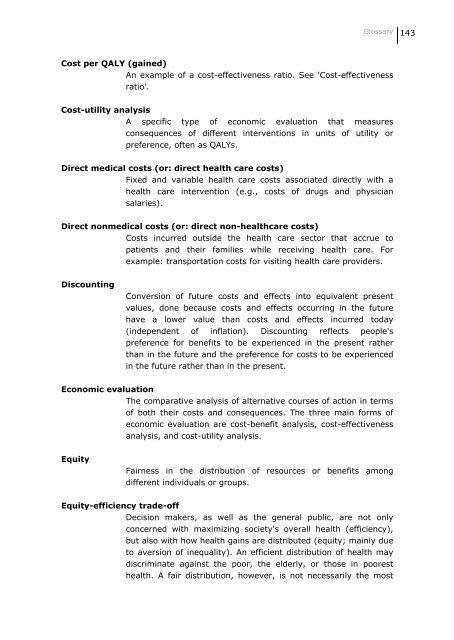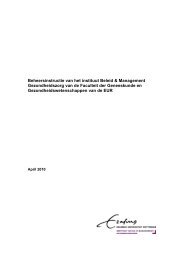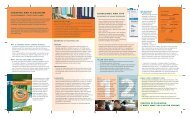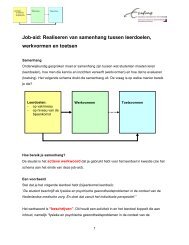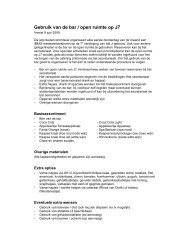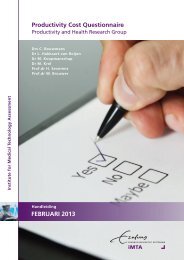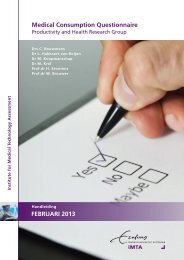Marten J. Poley - Erasmus Universiteit Rotterdam
Marten J. Poley - Erasmus Universiteit Rotterdam
Marten J. Poley - Erasmus Universiteit Rotterdam
- No tags were found...
Create successful ePaper yourself
Turn your PDF publications into a flip-book with our unique Google optimized e-Paper software.
Glossary 143Cost per QALY (gained)An example of a cost-effectiveness ratio. See 'Cost-effectivenessratio'.Cost-utility analysisA specific type of economic evaluation that measuresconsequences of different interventions in units of utility orpreference, often as QALYs.Direct medical costs (or: direct health care costs)Fixed and variable health care costs associated directly with ahealth care intervention (e.g., costs of drugs and physiciansalaries).Direct nonmedical costs (or: direct non-healthcare costs)Costs incurred outside the health care sector that accrue topatients and their families while receiving health care. Forexample: transportation costs for visiting health care providers.DiscountingConversion of future costs and effects into equivalent presentvalues, done because costs and effects occurring in the futurehave a lower value than costs and effects incurred today(independent of inflation). Discounting reflects people'spreference for benefits to be experienced in the present ratherthan in the future and the preference for costs to be experiencedin the future rather than in the present.Economic evaluationThe comparative analysis of alternative courses of action in termsof both their costs and consequences. The three main forms ofeconomic evaluation are cost-benefit analysis, cost-effectivenessanalysis, and cost-utility analysis.EquityFairness in the distribution of resources or benefits amongdifferent individuals or groups.Equity-efficiency trade-offDecision makers, as well as the general public, are not onlyconcerned with maximizing society's overall health (efficiency),but also with how health gains are distributed (equity; mainly dueto aversion of inequality). An efficient distribution of health maydiscriminate against the poor, the elderly, or those in pooresthealth. A fair distribution, however, is not necessarily the most


